|
|
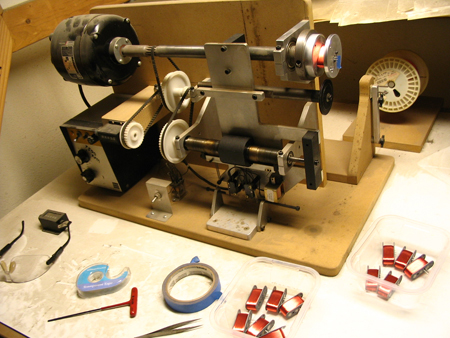
Yep, I designed and built my own coil winder. But, you probably assumed that...I put 5000 turns of #41 wire on to a M-pickup bobbin at about 1500 rpm. The whole winding process takes about 5 minutes per bobbin.

Next, the coils are lined up on a wire rod for a process called "potting", which essentially glues the wire windings together into one solid mass. This is done for mechanical durability and to prevent microphonics in the windings. I use Smith's MultiWoodPrime, which is a water-thin epoxy. I pour it onto the coils until they're fully saturated, and let them cure.
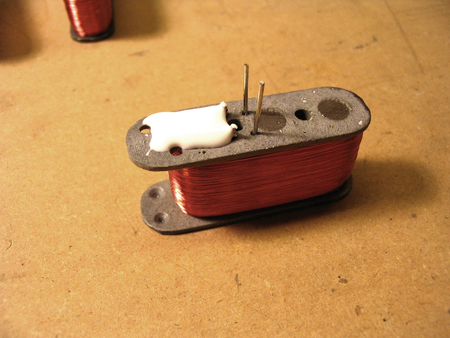
I cover the fragile terminated ends of the magnet wires with a blob of LMI Luthiers' glue, for an extra level of protection. Most pickup failures are from fractures of the magnet wire right near the termination points. Extra care here is worth it.
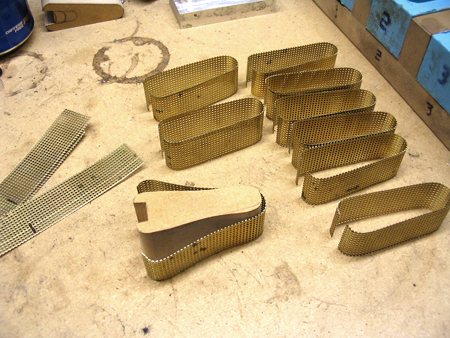
The brass strips are hand bent around a wooden form and the ends are trimmed to length.
|
|
|

Here is a batch of M-pickup bobbins after winding.

The ends of the fine magnet wire are carefully cleaned, wrapped around the forward pair of terminal wires, and soldered. The forward terminal wires are clipped off. The rear terminal wires are left long and will become the attachment points for the wires to the control circuit.
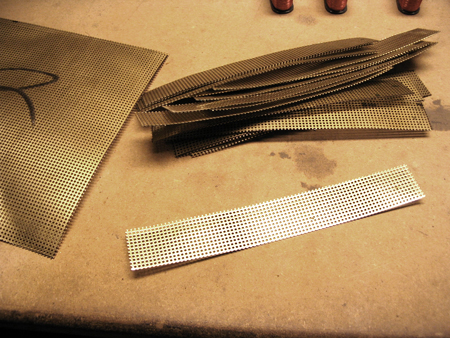
I surround each M-pickup coil with a shell made from perforated brass sheet. The shell adds mechanical protection, electromagnetic shielding, and a classy look. First, strips of the brass sheet are sheared to size.
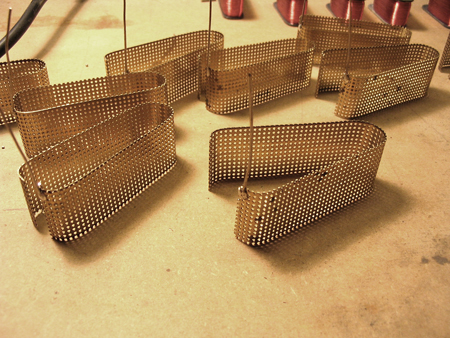
A copper buss wire is soldered to the brass shell, which will eventually be connected to the instrument's shielding.
Next Page..
|
|

